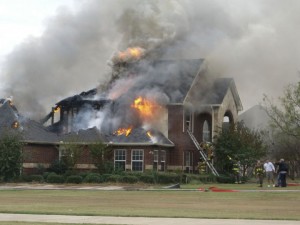 When building, repairing, or remodeling your home, aim for fire-resistance. If your home is currently at high risk, consider making changes now to make it less likely to burn should there be a wildfire nearby. Even if the fire does not make it to your property, the embers can carry a very long distance and catch your house on fire. With the proper precautions, the fire may even come through your property and leave your home untouched.
When building, repairing, or remodeling your home, aim for fire-resistance. If your home is currently at high risk, consider making changes now to make it less likely to burn should there be a wildfire nearby. Even if the fire does not make it to your property, the embers can carry a very long distance and catch your house on fire. With the proper precautions, the fire may even come through your property and leave your home untouched.
- Use roof material such as composition, tile, slate, or metal. If you must have wood shingles, or shakes, make sure they are pressure treated.
- Cover vents with fine wire mesh.
- Enclose eaves, soffits, and other openings.
- Keep roof and gutters free of leaves and pine needles. Screen or enclose them so debris does not accumulate.
- Windows should be double paned, with one pane made of tempered glass, so they are less likely to shatter from the heat of a wildfire and let embers in.
- Use fireproof shutters for large windows and glass doors.
- Use weather stripping around doors and your garage door to keep embers from blowing in.
- Any wood such as siding, decks, and posts, should be treated with fire-retardant.
- Patio covers and car ports should also be made of fire-resistant materials.
- Make sure that your driveway is wide enough to accommodate emergency vehicles and free from flammable vegetation.
- Gates should open inward, and be wide enough for emergency vehicles to pass through.
- The entrance to your property should be clearly marked with your address, and easily readable from the road.
- Consider installing fire sprinklers in your home.
- Keep a fire extinguisher, rake, shovel, hoe, and bucket handy.
- Have multiple water hoses, and make sure they are long enough to reach all areas of your home and all structures.
- If you have a fence, use fire resistant or noncombustible fencing materials.
- Create 100 feet of defensible space around your home and all structures.















